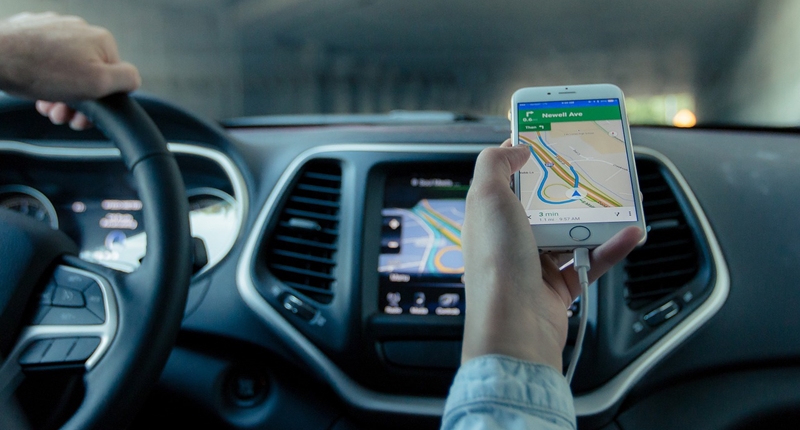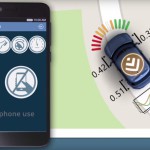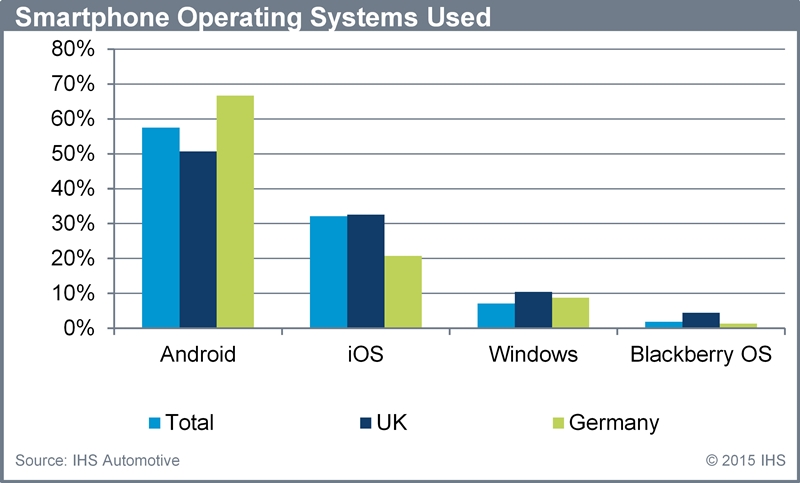Side hustles are no longer optional in South Africa. With food inflation still above 8 percent and electricity, transport and mobile data costs climbing…
What do drivers actually want when it comes to connecting their cars and smartphones?

The cars that roll off factory floors today are as much personal devices as they are ways for us to get around on a daily basis. Despite being loaded with tech (and are equally vulnerable to hackers) though, people still feel the need to use smartphones while driving. But exactly what do we do with our smartphones while driving?
A new study, conducted by IHS Automotive, aimed to find out just that.
More than 4 000 vehicle owners who intend on purchasing a new vehicle within the next 36 months were surveyed, representing four key automotive markets — the US, China, Germany and the United Kingdom.
The results show, among other things, that Android is the dominant OS among drivers, the UK has serious catching up to do when it comes to audio streaming and that AM and FM radio still have a massive role to play in the car.
Samsung devices most preferred; Various in-vehicle uses reported
In Germany, Samsung smartphones led the way with 49% of respondents indicating Samsung as the brand they owned and used most often. Apple ranked second at just 21%. In the UK, ownership of Samsung and Apple devices were nearly equal with Samsung edging out Apple by a single percentage point margin (34% Samsung to 33% for Apple).
Respondents from the UK also showed the largest variety of smartphone brand ownership in the survey. That suggests that whichever car maker comes up with the best way of integrating multiple OSes seriously stands to gain there.
Operating systems also varied, with 67% of German consumers reporting Android use compared to just 21% for iOS systems. In the UK, findings were not as dramatic, though Android led the way with just over 50 percent of respondents compared with just 30% iOS users.
Driven to distraction
Respondents in the UK overwhelmingly (more than 80%) indicated that using their smartphone while driving is distracting, while just over 75% of respondents in Germany found it distracting. Interestingly, just over 60% of respondents from the UK indicated they prefer controlling their smartphone with in-vehicle voice controls, while nearly 80 percent of Germany-based respondents indicated they prefer to do so. In both countries, about 65% of respondents reported using their phone as a navigation aid for directions or points of interest while driving.
When it comes to using Bluetooth pairing to stream audio from a smartphone into the vehicle, less than 65% of respondents in the UK reported doing so, compared with more than 70% of respondents in Germany.
Consumers in the UK and Germany also indicated preferences for interacting with smartphones in the vehicle through an in-vehicle touchscreen and steering wheel controls, each of which were cited by more than 60% of respondents.
Carrier and data plans vary by country
Eighty-three percent of respondents in the UK indicated their mobile phone package included a data plan, while just 60% of respondents in Germany reported having one. According to IHS, this could be a sign that German respondents rely more heavily on Wi-Fi networks when they travel with their phones, suggesting that embedded connectivity might be of more value in Germany. Certainly, German car makers such as Audi have led the way when it comes to in-car connectivity.
More than 70% of respondents subscribe to a monthly mobile plan, with fewer than 30% indicating they have pre-paid or pay-as-you-go plans.
AM/FM radio and CD players not dead yet; Streaming and Internet radio gaining
When asked about radio and infotainment systems, 60% of respondents in the UK indicated that they would prefer a radio or infotainment system designed by Apple or Google, while 55% of respondents in Germany agreed with that sentiment.
Somewhat surprisingly,more than 65% of UK respondents indicated that AM and FM radio was their listening mode of choice. Respondents based in Germany indicated similar preferences. Across all respondents, more than 50% indicated listening to music that was stored on their mobile device was among the top choices for in-vehicle listening. Internet/streaming radio and HD radio followed in the rankings.
Nearly 40% of respondents in the UK report said they subscribe to a premium streaming radio or on-demand streaming service, while less than 30% of German respondents do.
According to the IHS report, top Internet radio/audio apps in the UK and Germany include Spotify with 33% share among respondents in each country, followed by iTunes Radio with just 13%in both the UK and Germany. However, Google Play was close behind, with 12% of respondents in Germany noting that as the app they use most often. Google Play netted just six percent interest among UK respondents, however.
“Across the UK and Germany, we saw very similar results, though not exact,” said Colin Bird, senior analyst, automotive software, apps and services at IHS Automotive. “Consumers in these countries rely on their phones for in-vehicle connectivity and use a variety of apps while driving. Our research identifies many trends that can help foster further development for technology in vehicles sold in these countries.”



